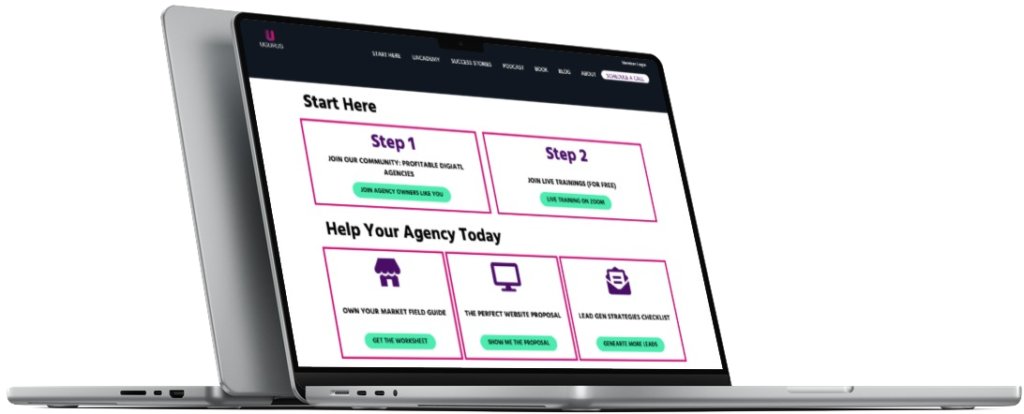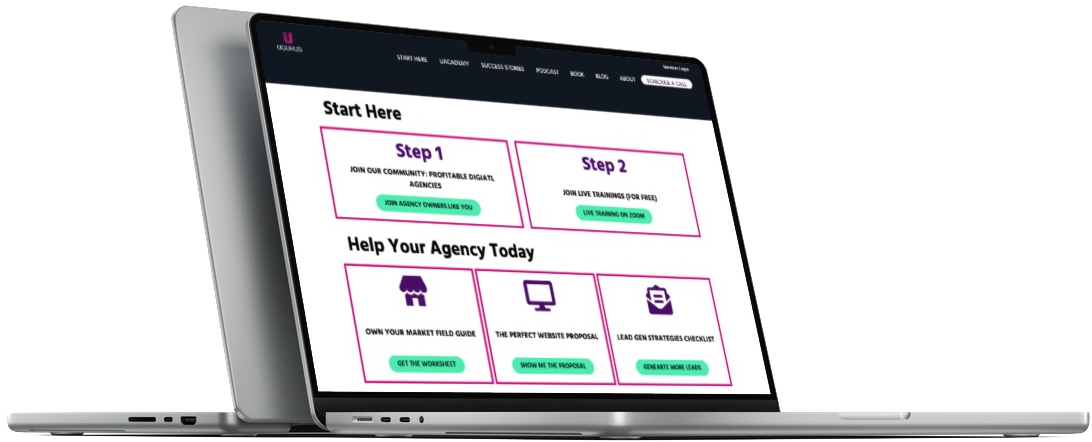Many marketing and web design agencies are great at pitching a potential client, but often they lose focus or back off when it comes time to close the business. By this I mean, they don’t put as much effort or drive into the actual proposal as they did in creating the pitch.
A proposal needs to outline everything you discussed with the potential client. It should clearly communicate your understanding of the client’s problem, their desired results, your corresponding experience, and the exact process and expected deliverables.
After 12+ years of running a digital agency, I realized that a winning proposal needs to focus on the client and not the agency. Let me say that again. The client doesn’t care about how many industry awards you have won. They care about knowing that you can solve their problem and that you have the proven experience and a process in place to back that up.
It took me years and several big losses to figure out the best way to create a proposal, and in this post I will outline how to write a winning proposal in seven easy steps.
Step 1: The Cover Letter
One of the most important parts of a proposal is the cover letter. Over 35 percent of proposals are not read beyond the first page. Treat the cover letter as a landing page. Use it to catch and keep the reader’s attention. Put yourself in the shoes of the client and think about how many proposals they need to review. You need to make a great first impression and keep them excited about reading through your proposal. Make sure the cover letter is brief—it should be under a page.
There are four parts to the cover letter:
- An explanation of the potential client’s problem.
- Your suggestions for solving the problem.
- A quick explanation of who you are and your motivations.
- A statement that ongoing input and open communication are crucial to the project’s success.
Step 2: Define the Executive Summary
Now that your cover letter has captured your reader’s attention, you’ll want to add more detail. On the next page, create an executive summary that covers the following points:
- What is the primary focus of this proposal?
- Outline any research that you’ve accomplished and internal meetings that address the potential client’s needs.
- List any past experience with solving the client’s problem.
- Define the estimated time it will take for the project.
- Explain your internal team development or management structure for the proposed project.
- Outline the delivery process.
Step 3: Lay Out the Critical Factors to Success
After the executive summary, it’s time to lay out the critical factors to success. These are the action items or crucial information needed to make the project successful. For example:
- Objective: How will your client know the project is successful? What are the quantifiable and measurable metrics you will use to agree on success?
- Position: How does your client want to be perceived by their customers?
- Engage: How would your client like their customers to be engaged and interact with their brand? What value are they offering? Why will their customers choose to visit and interact with the website?
- Scalability: Can the website and marketing strategy adapt to the future? Will the website work with existing systems?
- Usability: Is the website easy to use based on the different types of users?
- Accessibility: What tools will the website use to drive new visitors versus returning visitors?
Step 4: List the Deliverables
After you’ve outlined the factors to success, dive into the deliverables. Categorize your services into sections, depending on your business. For a marketing/web design proposal, my categories include creative services, marketing, and technology.
- Be very descriptive about each service that you are offering. This is especially important, because this is where you define everything that you promise your client you are going to perform. (You don’t want a client to come back and say, “I assumed you were including this in the proposal.”)
- Tell your client about your methodology so they understand the process.
- Add images where possible so the proposal is not too text heavy, but don’t get carried away.
- List out all the deliverables, i.e., how many versions of the design comps will you provide, how many pages are included, does this scope include a responsive site design?
- List any services that you offer, which they may have not asked for but could be a good compliment. Label that section: optional services. Some optional up-sell items could be: PPC, SEO, and email marketing.
Step 5: Summarize Your Services
Next, I summarize all the deliverables and services. Make sure to list all the services, including the name and the price. I recommend categorizing these into two columns: One column for one time services like web design and the other for recurring fees like SEO and hosting. This method makes it easy for the client to understand.
Step 6: Tell Them Who You Are
Give a quick overview of your company and your company’s purpose and mission. Mention any awards you’ve achieved, and list a short bio for each person who will be involved in the project. The goal is to give the potential client a good understanding of your company and culture. People do business with people they like and who they feel they know.
Step 7: Close That New Business
Last, include a contract section. Most people separate the proposal from the contract, but I always keep everything together. This makes it easier for the client, and easier for myself.
If you want to learn even more ways to increase your proposal conversions, check out my free video on how my company converted 80 percent of my proposals. You will see how my business, Solar Velocity, achieved such a high proposal close rate, and you can review the exact proposals we used to close deals with big businesses like AT&T, AFLAC and Hitachi.
GET YOUR FREE AGENCY ACCELERATOR PACKAGE





